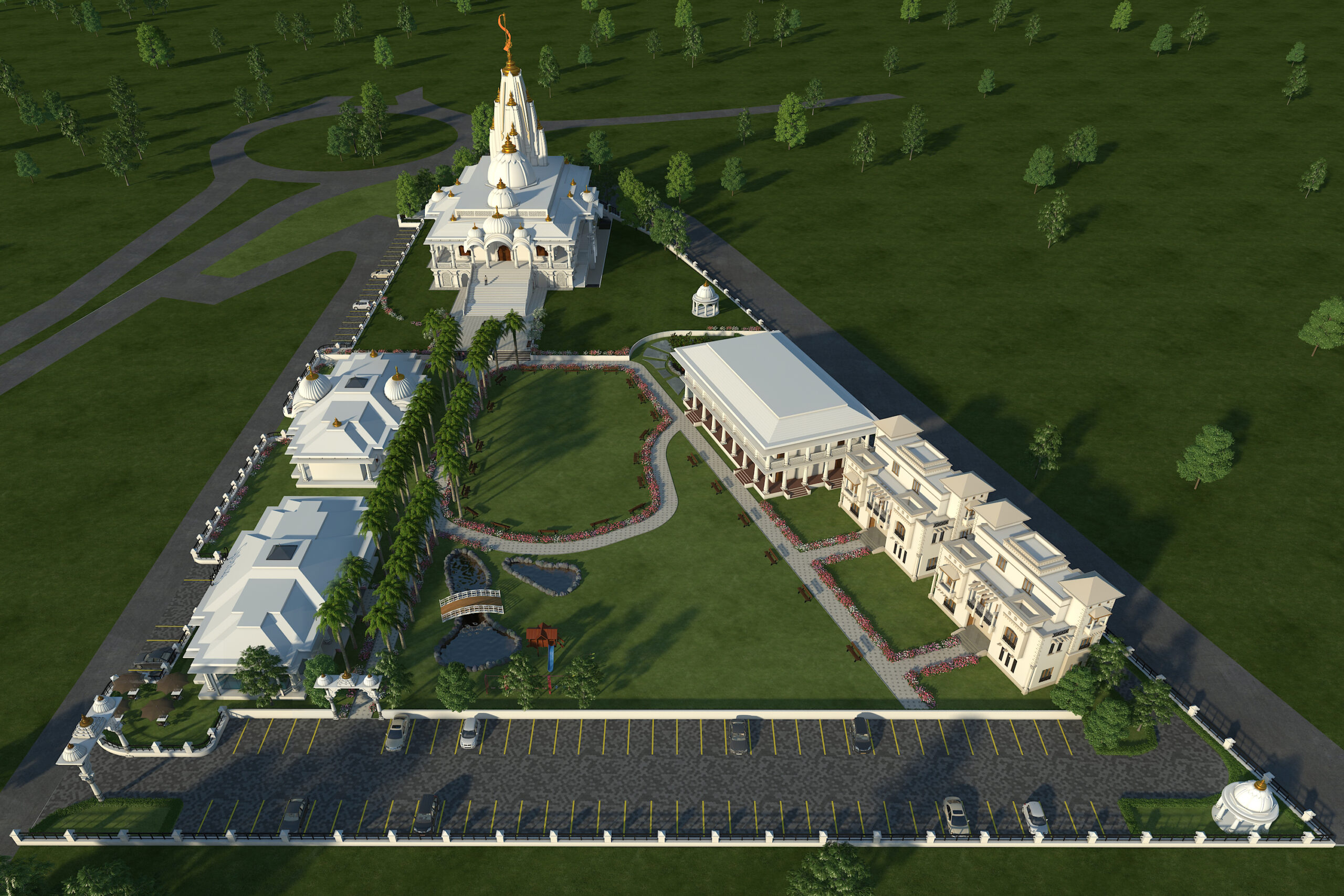Temple of unity
A Temple of Unity, right at the heart of urban Mauritius is a dream that has matured over decades. Amidst the tides of material life where tired souls drift in never-ending pursuits of elusive goals, the Temple of Unity will be a place for them to stop and reconnect to the purpose of human life. It will be a place of devotion, a centre for knowledge and a haven of peace which will become the ultimate expression of love for Mauritians from all walks of life of all race and faith.
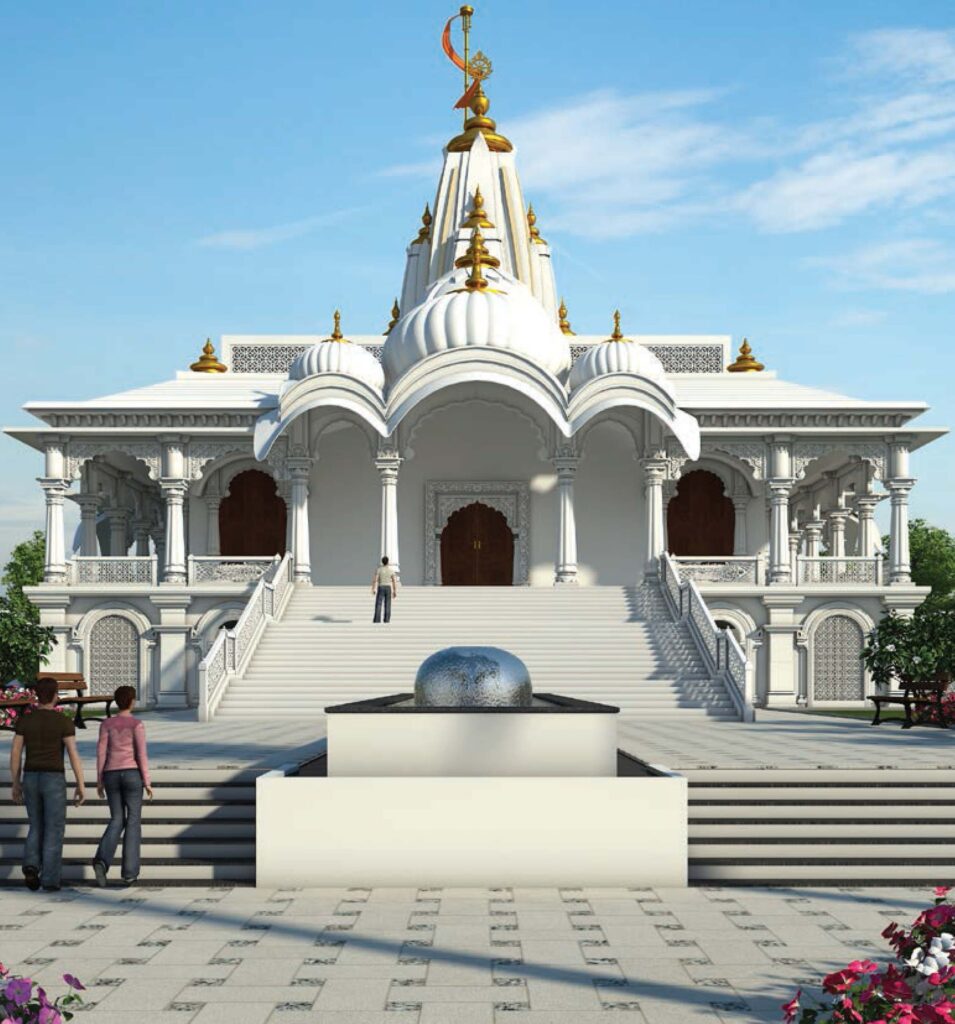
Why a temple?
To quote Srila Prabhupada, the purpose of building a temple is “To erect for the members, and for society at large, a holy place of transcendental pastimes, dedicated to the personality of Krishna and to bring members of society closer together for the purpose of teaching a simpler and more natural way of life.
Concept & Style
From the inception to the conception of the temple design, the architecture of the temple is an embodiment of Vedic tradition. Our team of architects from India and Mauritius have created a unique landmark and a symbol of Vedic culture, a fundamental element of the Temple of Unity…
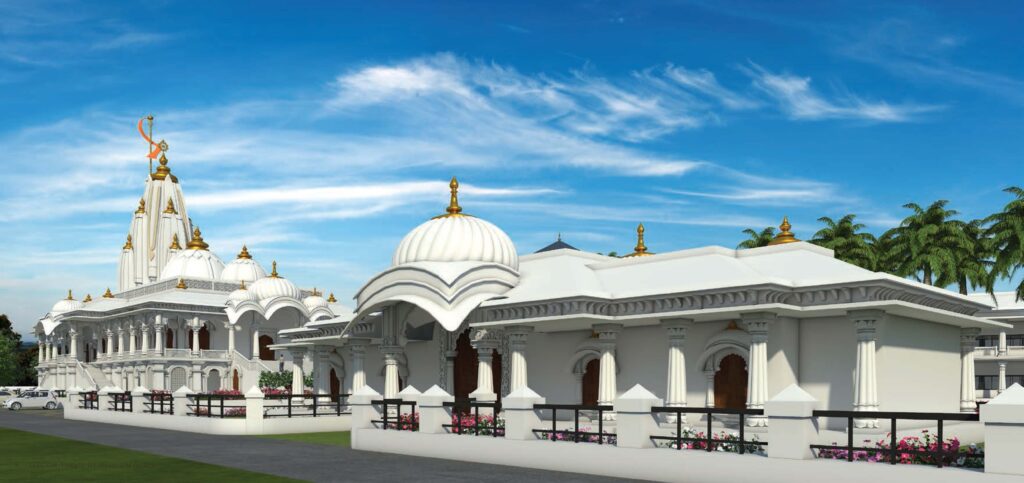
Temple Block
Surface Area – 2500 sq metres
Temple Hall – 500 sq metres accommodating 700 people sitting (about 800 standing)
Auditorium – 225 seating
Restaurant – 100 seatingGift Shop / Book Shop
Multimedia Room
Other main components
Prasadam Hall & kitchen, Residential Quarters, Gurukula & classrooms
Landscaping
parikrama marg
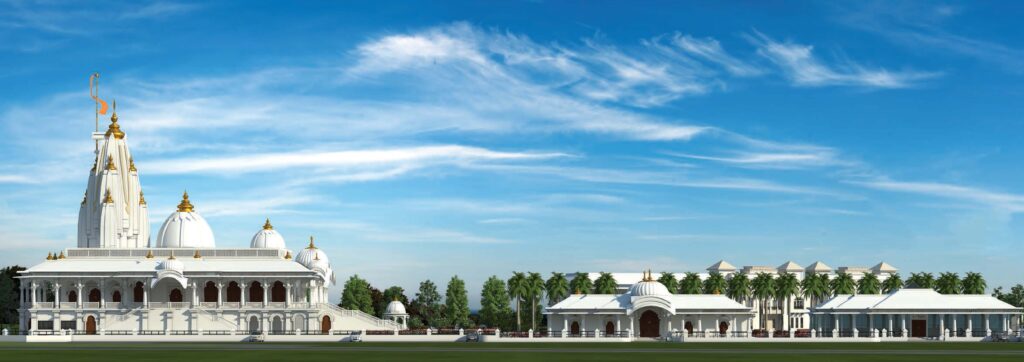
Restaurant
Following the general growing demand and trends towards pure vegetarian and healthy eating in a spiritually charged environment, the new project will provide facilities for an “A la Carte” restaurant with a seating capacity of 100 persons while at the same time it will cater for an express service area for quick meals. Both facilities will cover a multitude of special and traditional menus from diverse cuisines which will surely appeal to people from all walks of life…
BENEFITS OF BUILDING A TEMPLE
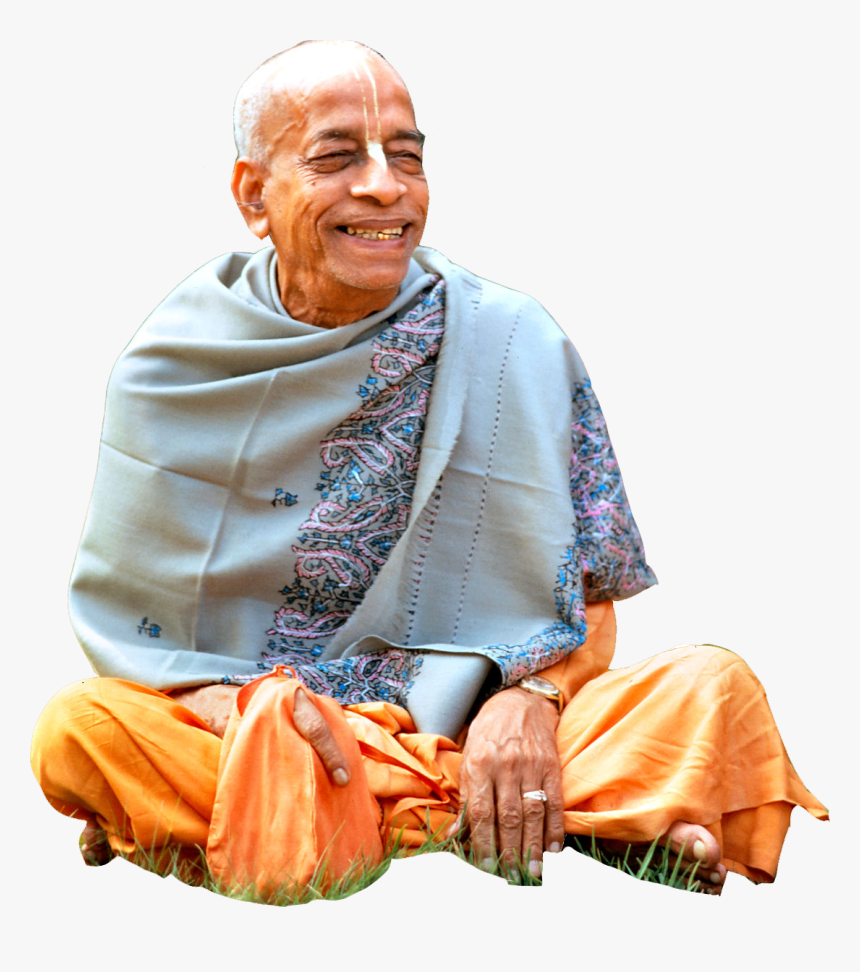
Quotes from Srila Praphupada
Shrimad Bhagavatam Canto 9, Chapter 9, Text 44, Purport
A devotee may be engaged in earning money, but he uses that money for propagating the Kṛṣṇa consciousness movement by constructing large temples and establishing worship of the Supreme Personality of Godhead.
Shrimad Bhagavatam Canto 5, Chapter 3, Text 8, Purport
Such engagement is meant for our benefit. If we engage our money in constructing a gorgeous temple, we are freed from the reactions of our endeavors. This is for our benefit.
Lecture on Shrimad Bhagavatam Canto 7, Chapter 9, Text 11, Montreal, August 17, 1968
So this church building or temple building or mosque building is coming down from time immemorial. ….Whenever Kṛṣṇa wants some service from you or begs something from you, it does not mean that He is in need of it. He is not in need of it. But He is in need of your love because you have forgotten how to love God, how to love Kṛṣṇa.
Caitanya-caritāmṛta – Ādi-līlā 7 Text 164 Purport
When Rūpa Gosvāmī and Sanātana Gosvāmī went to Vṛndāvana, there was not a single temple, but by their preaching they were gradually able to construct various temples. Sanātana Gosvāmī constructed the Madana-mohana temple, and Rūpa Gosvāmī constructed the Govindajī temple. Similarly, their nephew Jīva Gosvāmī constructed the Rādhā-Dāmodara temple, Śrī Gopāla Bhaṭṭa Gosvāmī constructed the Rādhā-ramaṇa temple, Śrī Lokanātha Gosvāmī constructed the Gokulānanda temple, and Śyāmānanda Gosvāmī constructed the Śyāmasundara temple. In this way, many temples were gradually constructed. For preaching, construction of temples is also necessary. The Gosvāmīs not only engaged in writing books but also constructed temples because both are needed for preaching work. Śrī Caitanya Mahāprabhu wanted the cult of His saṅkīrtana movement to spread all over the world. Now that the International Society for Krishna Consciousness has taken up this task of preaching the cult of Lord Caitanya, its members should not only construct temples in every town and village of the globe but also distribute the books that have already been written and further increase the number of books. Both distribution of books and construction of temples must continue side by side in parallel lines.
Kṛṣṇa Book
A devotee’s attempt to engage his energies in such activities as constructing a Viṣṇu temple, however, is never wasted. Such engagements are called ‘kṛṣṇārthe akhila-ceṣṭā’, variegated activities performed to please Kṛṣṇa. A philanthropist’s opening a school building and a devotee’s constructing a temple are not on the same level. Although a philanthropist’s opening an educational institution may be pious activity, it comes under the laws of karma, whereas constructing a temple for Viṣṇu is devotional service.
Lecture on Shrimad Bhagavatam Canto 1, Chapter 2, Text 8, Bombay, December 26, 1972
So one salt merchant came, Sindhi salt merchant, he was passing from Vṛndāvana to Delhi side, and he offered his service, and Sanātana Goswāmī asked him to construct the temple of Madana-mohana. That temple is still existing, Madana-mohana’s temple. So this is the proper use. If you have got some money, don’t use it for constructing a big skyscraper building. Better you try to construct a very nice temple for Kṛṣṇa’s situation. That is proper use.
Shrimad Bhagavatam Canto 9, Chapter 4, Text 25 – Purport
In the construction of a high skyscraper and the construction of a temple, there may be the same enthusiasm, but the endeavors are different, for one is material and the other spiritual. Spiritual activities should not be confused with material activities and given up. Nothing connected with Hari, the Supreme Personality of Godhead, is material.
Initiation lecture, Hawaii
So either Christian, Muhammadan or Hindus or anyone, they were constructing temple, churches, mosques. But that mentality is gone. You see? They will spend lots of money for a skyscraper building to get income, and temple is called non-productive building. You see? They do not wish to engage their money in non-productive thing because they have become economic. But that is wrong theory.
Nectar of Devotion
It is stated in the Viṣṇu-rahasya: “Any person who can arrange for service to the Lord in the same way that a king is given service by his attendants is surely elevated to the abode of Kṛṣṇa after death.” Actually, in India, the temples are just like royal palaces. They are not ordinary buildings because the worship of Kṛṣṇa should be performed in just the way that a king is worshiped in his palace. So in Vṛndāvana there are many hundreds of temples wherein the Deity is worshiped exactly like a king. In the Nāradīya Purāṇa it is stated: “If a person stays in the Lord’s temple even for a few moments, he can surely achieve the transcendental kingdom of God.”
The conclusion is that those who are rich men in society should construct beautiful temples and arrange for the worship of Viṣṇu, so that people may be attracted to visit such temples and thereby be offered the opportunity of dancing before the Lord, or chanting the holy name of the Lord, or else of hearing the holy name of the Lord. In this way, everyone will be given the chance to elevate himself to the kingdom of God. In other words, even a common man, simply by visiting such a temple, will be able to attain the highest benedictions, not to mention the devotees who are constantly engaged in the service of the Lord in full Kṛṣṇa consciousness.
Shrimad Bhagavatam Canto 2, Chapter 8, Text 21, Purport
As explained before, the Mahābhārata is the history of ancient India, and so also are the Purāṇas. Pious acts are prescribed in the supplementary Vedas (smṛtis), which specifically mention digging tanks and wells for the water supply of the people in general. To plant trees on the public roads, to construct public temples and places of worship of God, to establish places of charity where the poor destitutes can be provided with foodstuff, and similar activities are called pūrta.


